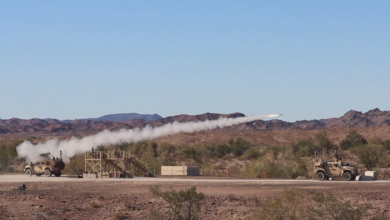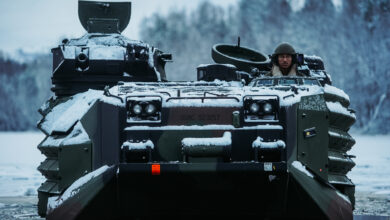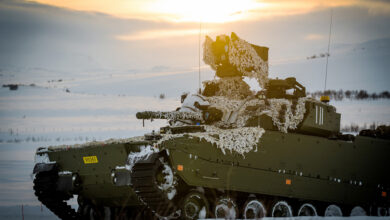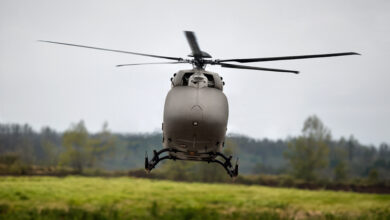‘Thank you for your service’: The US civilian – military divide
Photos of American military families are being posted on social media with the hashtag #KnowYourMil, short for “know your military.” The initiative has been promoted by the U.S. Department of Defense in an effort to address the growing between the military and civilians.
Master Sgt. Dan “Chef” Gross, a C-130 Hercules flight engineer, brings a touch of home to pilots, passengers and crew. #KnowYourMil #NationalPastryDay 🧁@USAFReserve pic.twitter.com/QacRPUneVR
— DATSD Melanie Fonder Kaye (@DoD_Outreach) December 9, 2018
Volunteer force
As of this year, less than 0.5 percent of the U.S. population currently serves in the military. The U.S. is currently engaged in 17 conflicts worldwide, according retired Colonel Lawrence Wilkerson, and does not have enough service members to do the job. This means the same people are re-deployed for short periods of time, which can be deleterious to mental health. About 2.7 million American service members have deployed Afghanistan and Iraq alone since 2001. Add to this the 700-800 bases the U.S. has overseas and the limited personnel are put under more strain.
The target age group for military recruitment is between 17 and 24-years-old, yet only 30 percent of that population meet basic recruitment standards. “For many, things like obesity, mental health, drugs, and criminal offenses eliminate them from available service,” according to a 2017 report by the U.S. Army War College.
The demographics of the military do not represent the country at large. The majority of service members come from states in the southeast – the top five being Georgia, Florida, Virginia, Alabama and South Carolina. According to the Civil and Military Relations Report, “44 percent [of recruits] come from rural areas” and other research shows that, since 9/11, service members are more likely to be Republican and have relatives who served in the military.
What does it mean to serve?
The U.S. military has been an all-volunteer force since 1973. Marine Jeff Groom recently reflected on the difference between his grandparents’ perception and his own experience: ”They took it for granted that part of the ‘deal’ was willing sacrifice for the nation when called upon, hence the word ‘service,’” Groom told The Defense Post.
“I had the same expectation but ended up being disappointed. I joined because my country was engaged in conflicts and I felt I needed to sacrifice.”
There are generational differences in service members’ perceptions about what it means to serve. Protests over Vietnam ended the draft but the war itself eroded public trust in national government and military. Americans today trust the military more than any other U.S. institution, be it government or media.
Yet, for service members like Groom, the public does not clearly understand their sacrifice – or disappointment – and it is easier to thank men and women for their service or display bumper-sticker patriotism than to grapple with the realities of a military-industrial complex, a volunteer force, and 17 years of war.
”The problem is ‘thank you for your service’ has become a crutch by which we honor the military without understanding it in the least,” Army Major John Q. Bolton recently told an audience at a foreign policy panel hosted by The American Conservative. “No matter how well our troops perform, their sacrifice is irrelevant if it is not in service of something that suits the nation’s ends.”
Redefining patriotism
The question is what are those ends? Groom, a retired Marine officer, argues that the military needs to quantify its objectives rather than rely on ambiguous rhetoric of “fighting terror” or “establishing democracy.”
While the ends remain unclear, the human, monetary, social and political tolls of the Iraq and Afghanistan wars is staggering.
According to the Costs of War Project, over 6,800 U.S. troops have died since 2003 and over 970,000 veterans have registered disability claims. Between 2001 and 2014, 26,270 Afghan civilians were killed as a result of the war. Iraq Body Count estimates between 182,650 and 205,043 Iraqi civilians have died since 2003. The numbers account for people killed by Islamic State, the U.S.-led Coalition, and unknown actors, but do not include those who have been displaced or died from disease and malnutrition.
The U.S. government has spent $4.8 trillion – not including interest payments – on the wars in Iraq and Afghanistan and in supporting Pakistan’s counter-insurgency campaigns since 2004. Last month the Costs of War Project released a report estimating the U.S. will spend $5.9 trillion on the war on terror through 2019. This estimate includes the interest on debt and veteran benefits.
But though the Afghanistan conflict is in its 17th year, for the public wars are increasingly out of sight and out of mind.
“That’s because the military has been at war, not the country and we put the bill on a credit card instead of paying for it through taxes,” said Groom. “Rather than demand sacrifice for war, our so-called leaders recommended shopping at the mall.”
The Defense Department’s #KnowYourMil campaign seeks to tell the stories of service members; a 2017 report by the Army War College suggests an increase in military demonstrations at public events. There is no clear consensus about how to bridge the divide between the military and the country, service member and citizen, and whether or not the split continues to grow remains to be seen.
Daniel Sipes contributed reporting.












